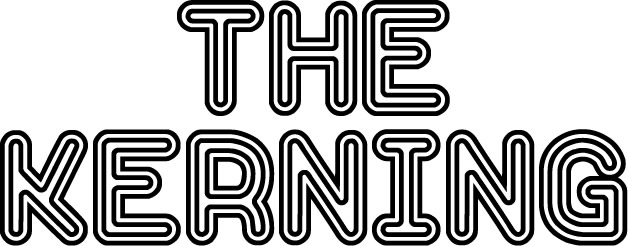
Typography is a critical component of modern communication, and it involves much more than picking a font and adjusting its size. One of the most important factors in typography is kerning, the process of adjusting the spacing between individual letters. While it may seem like a relatively minor detail, kerning can profoundly impact the readability, legibility, and overall aesthetic of any piece of text. This comprehensive guide will explore why kerning is crucial for typography, and how it can make or break a design. We’ll cover everything from the basics of kerning to advanced techniques that can help you achieve professional-level typography. Whether you’re a graphic designer, a typographer, or simply someone who values good communication, this guide is a must-read for anyone interested in the art and science of typography.

What is Kerning?
Kerning is a crucial process in typography that involves adjusting the spacing between letters and characters in a font. The primary objective of kerning is to enhance the legibility and aesthetics of written text by improving the visual appearance of the font. The process involves adjusting the space between each letter and character to create a more visually appealing and balanced design. Perfect kerning can be the difference between a beautiful, polished font and a cluttered, unprofessional-looking text. In conclusion, kerning is a critical aspect of typography that should not be overlooked, as it plays an essential role in optimizing the readability, balance, and visual appeal of written works.
Kerning is an essential aspect of typography that involves adjusting the spaces between characters in a font. By carefully adjusting the distance between individual letters, kerning can significantly impact the readability and visual appeal of a text. When properly executed, kerning can create a more aesthetically pleasing effect for words or phrases when displayed on a page or website. The right amount of kerning will help the text to appear balanced, clear, and easy to read. It is particularly essential when using fonts that have unusual shapes or styles because improper kerning can make the text look awkward or difficult to interpret. In summary, Kerning plays an important role in typography, helping designers to create visually appealing and highly digestible text that effectively communicates their intended message.
In conclusion, kerning is an essential aspect of typography that can make or break the legibility and aesthetics of a design. With the right amount of attention to detail and precision, kerning can help designers create more polished and professional typography. It can also be used to adjust spacing between letter elements in logos, which is especially important when working with smaller logos or elements with thin lines. As such, it is crucial for designers to understand the importance of kerning, and to use it effectively in their designs. Whether working on a logo, a website, or a print project, kerning should always be considered as a critical element of typography that can elevate the overall quality of a design.
The Benefits of Kerning in Typography
Kerning is a vital typography tool that can make the difference between a beautifully designed marketing asset and a poor-quality one. The technique of adjusting the space between two letters or characters is commonly used to create an evenly spaced typeface. This is particularly crucial for companies that rely heavily on their branding and fonts, as it enhances readability and creates a more balanced aesthetic. Kerning helps to eliminate awkward spacing between letters or words, making text look more aesthetically pleasing and easy to read. It is essential to understand and master the art of kerning, as it can elevate the overall quality of any design project. By paying close attention to kerning, designers have the power to create a visually appealing typography that will effectively communicate their message and leave a lasting impression on their audience.
Kerning is a crucial aspect of typography that allows designers to achieve a polished and professional look for their designs. With the use of kerning, designers can exercise greater control over the spacing between letters, helping to ensure that the design elements look uniform and consistent. This is particularly important when implementing typefaces in print or digital media, where even the slightest deviation in spacing can have a significant impact on the visual impact of the design. By carefully adjusting the kerning between individual characters, designers can create a more visually appealing layout that draws the viewer’s attention and conveys the intended message with greater clarity. Additionally, effective kerning can help ensure that logos and other design elements are scaled correctly across different formats and sizes, making it a vital tool for creating high-quality designs that look great in any medium. Overall, kerning is an essential aspect of typography that plays a critical role in enhancing the visual appeal and readability of design projects.
Furthermore, kerning is a crucial aspect of typography that designers cannot afford to overlook. In today’s competitive market, every brand or business must strive to create an impactful and engaging presence across all platforms. This requires a keen eye for detail, particularly when it comes to fonts and typefaces. By mastering the art of kerning, designers can take their designs to the next level, producing aesthetically pleasing and easy-to-read layouts that convey their message effectively. Ultimately, kerning is all about achieving balance and harmony in typography, allowing brands to stand out in today’s cluttered marketplace. So, whether you’re crafting a logo, designing a website, or producing printed materials, be sure to pay close attention to your fonts and how they are kerned – it can make all the difference in creating a memorable and impactful design.
Understanding the Kern-Able Character Pairs
Kerning is a crucial component of typography that is often overlooked. Understanding the kern-able character pairs is essential for creating typefaces and other text designs. The kerning process involves adjusting the spacing between characters to create a balanced and visually pleasing text. A well-kerned typeface not only improves its aesthetics but also enhances the readability of the text. Designers who have a good understanding of kerning can create better, more visually appealing designs that communicate their message effectively. Knowing which pairs of characters have spacing issues is critical as it helps designers avoid common mistakes and create a more consistent and professional-looking design. In summary, mastering kerning is necessary for designers who aim to create compelling and visually engaging typography, which ultimately impacts the success of their design.
In the world of typography, kerning is a crucial aspect that determines the overall look and feel of a font. With the right kerning, two characters can interact with each other seamlessly, creating a visually pleasing and cohesive design. The spacing between two adjacent characters plays an essential role in establishing the proper kerning. It needs to be precise enough to bridge the gap between letters without making them appear too cramped or too loose. Additionally, the specific height and width of the letters have a significant impact on kerning. As designers, we need to pay attention to these subtle nuances to ensure that our fonts are legible and visually appealing. Without proper kerning, even the best fonts can fall short in conveying the intended message. Therefore, understanding the importance of kerning is crucial in creating impactful design elements that capture the viewer’s attention. As such, fonts require meticulous attention to detail to achieve the desired effect.
Also, in addition to improving readability, mastering the art of kerning can enhance the overall visual appeal of any design. The proper spacing between letters can add sophistication and professionalism to a piece, while improper kerning can make it appear sloppy or amateurish. As typography plays a crucial role in many aspects of design, from branding to advertising, it is essential to pay attention to the finer details such as kerning. By understanding and implementing this concept in our designs, we can elevate our work to a higher level of excellence.
How to Achieve Professional Kerning Results
Kerning is a crucial aspect of typography that involves the adjustment of spacing between individual letters in a font to create a cohesive and visually appealing design. The process of kerning is often overlooked, yet it is essential to achieve a professional and polished look in any typeface. Proper kerning ensures that the spacing between letters is even and consistent, eliminating gaps or overlaps that may detract from the readability of your text. In addition, it can also improve the overall balance and legibility of your typography, making it easier to read and more pleasing to the eye. Therefore, it is vital to pay close attention to kerning when designing any typeface, as it can make a significant impact on the final outcome of your project.
Thereafter, one can conclude that kerning is a crucial element in typography that can make all the difference in achieving a professional look. It demands meticulous attention to detail and a keen eye for balance and spacing. When executed correctly, kerning helps elevate the overall aesthetic appeal and readability of any text. Careful consideration of the space between letters and adjustments made accordingly, can have a significant impact on how text is perceived. It is imperative to keep in mind that kerning is not just a technical aspect, but an art form that requires discipline and dedication to master. Therefore, it is essential to give kerning the respect and attention it deserves so that every design speaks for itself with precision and poise.
Wrapping up
In conclusion, kerning is not just a technical aspect of typography, but an essential element that can elevate the quality and impact of any design. As we’ve explored in this comprehensive guide, kerning plays a critical role in enhancing readability and legibility, delivering the intended message effectively, and creating a visually appealing aesthetic. As such, taking the time to master kerning techniques can make all the difference for achieving professional-level typography. Whether you’re a graphic designer, a typographer, or simply someone who values good communication, understanding and applying kerning principles is a critical step to producing outstanding designs. By paying attention to kerning, you can enhance your typography skills and take your design projects to the next level.

